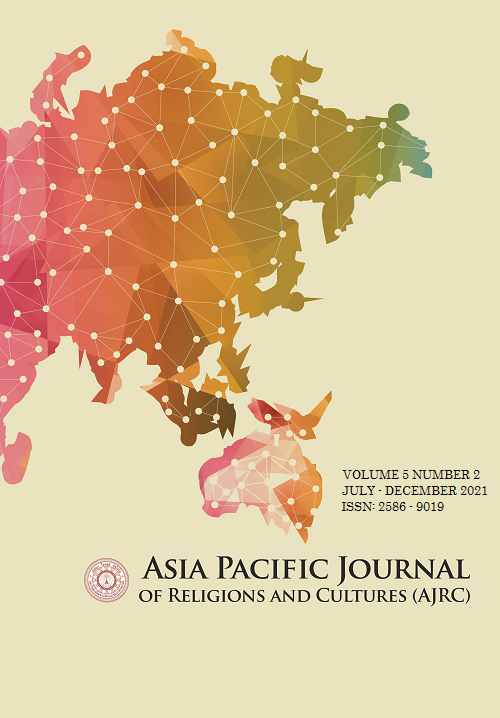The Development of Student Characteristics in According to the Nawaluk Framework of the Buddhist integration of Buddhapanya Sri Thawarawadee Buddhist College
Main Article Content
Abstract
This article aims to study guidelines for the development of desirable student characteristics according to the Navaluk Framework of Buddhapanya Sri Thawarawadee Buddhist College and 3) to propose a guideline for student characteristics in accordance with the Nawaluk framework of the Buddhist integration of Buddhapanya Sri Thawarawadee Buddhist College. These mixed methods research the first part will be quantitative Research, using Survey Research Methods. The sample group used in this research was students of Buddhapanya Sri Thawarawadee Buddhist College, Mahachulalongkornrajavidyalaya University who are studying in grade 1-3 with 205 people by opening Taro Yamane sample size table, the data was collected from the sample. All questionnaires were analyzed and processed by the researcher using the statistical package for social science research using the following statistics: frequency, Percentage, mean and standard deviation. qualitative research with in-depth interviews with key informants and analytic induction. The findings were as follows: The development of student characteristics follows Navaluck framework of Buddhapanya Sri Thawarawadee Buddhist College 9 aspects. There is an honorable path. Students are also encouraged to behave in strict compliance with the good. (2) Knowingly social change. Students need to understand the real tricks to learn. (3) Faith Dedicated to Buddhism Students should have knowledge and understanding of the tenets of Buddhism and students should be involved in the propagation of Buddhism to young people. (4) The ability to solve problems. Students have to know the main reasons for solving problems and obstacles. (5) They are keen on knowledge, which students must be able to analyze problems and learning barriers. (6) Being generous and sacrificing for the common good. Students should be considerate and advise their classmates. (7) Having a wide world view which students must recognize and accept the opinions of others. (8) There are psychological and intellectual leaders. Students must have knowledge and leadership development to friends in class. (9) Is committed to the development of their moral and ethical base. Students should focus on how to develop morals and ethics.
Article Details
References
Buddhapanya Sri Thawarawadee Buddhist College. (2019). College-level self-assessment report. Nakhon Pathom: Buddhapanya Sri Thawarawadee Buddhist College.
Chaiburi, R, (2019), Self-Preservation in Society with Morality and Ethics. Journal of Review Management Science, 21(1), 171-180.
Chayamarit, S. (2021). Human Resource Development to Accommodate the Public and Private Sector Organizations in the Digital Age. Journal of Multidisciplinary in Humanities and Social Sciences, 4(1), 38-50.
Hangsakul, P. G. (2021). Information Technology for Educational Administration. Journal of Educational Management and Research Innovation, 3(1), 1-10.
Kahintapongs, S. (2020). Renewable Energy Policy Development in Thailand. International Journal of Multidisciplinary in Management and Tourism, 4(2), 148-155.
Liu, X. & Prompanyo, M. (2021). The impact of Employee Training on Huawei innovation Performance in Shanxi Province, China. International Journal of Multidisciplinary in Management and Tourism, 5(1), 1-8.
Metiworachat, W. (2014). Buddhist Human Resource Development Model of the Lower Northern Rajabhat University 2. (Ph.D. Thesis Public Administration). Graduate School Mahachulalongkornrajavidyalaya University.
Office of the Education Council Secretariat. (2017). National Education Plan 2017 – 2036. Bangkok: Prik Wan Graphic.
Phra Bhramagunabhorn (P.A.Payutto). (2014). Buddhadhamma. (40th ed.). Bangkok: Phalitham Publishing.
Pewdum, P. (2021). Professional Learning Community to the Success of the Organization. Journal of Educational Management and Research Innovation, 3(1), 11-18.
Sankham, P. P., Puriwattano, P. S., & Chaiwong, S. (2021). Strengthening the Consciousness of Good Citizenship along the Line of Buddhist Youth. International Journal of Multidisciplinary in Cultures & Religions Studies, 1(2), 43-49.
Sincharu, T. (2008). Research and analysis of statistical data with SPSS. (9th ed.). Bangkok: V Interprint.
Singsakorndecha, M. (2014). Relationship between colleagues and setting goals for forecasting cooperation in employee work(M.E. Dissertation). Faculty of Humanities King Mongkut's University of Technology North Bangkok.
Sirilamduan, C., Chuaychuny, S., Ruamboon, K, & Srisuk, S. (2021). A Development Web Application for Planning Cultivate Vegetables to Maximize Profits on Nam Kam District, That Phanom, Nakhon Phanom Province, Thailand, International Journal of Multidisciplinary in Management and Tourism, 5(1), 19-28.
Siriwattano, P. S. (2021). A Society of Happiness: Following the Principle of Sadharanabhogidham. International Journal of Multidisciplinary in Cultures & Religions Studies, 2(1), 1-6.
Sukittimaythee, P. K. (2021). An Analysis of the Ways to Abstain From Declination in Parabhava Sutta. Journal of Multidisciplinary in Humanities and Social Sciences, 4(1), 84-95.


